Rugged, versatile and stylish: Iain Treloar asks the tough questions about bike specific backpacks.
We have weighty expectations when it comes to our bike riding bags. They need to be comfortable, protective of belongings, resistant to bad weather, and intelligently organised. There are a bewildering variety of different options on the market, but not all backpacks are created equally—and if you’re riding to work with one every day, it’s worth putting some thought into the next one you buy.
Most riders will have a preference one way or the other when it comes to the decision between backpacks, messenger bags and panniers. Backpacks, it could be argued, occupy some sort of middle ground between messenger bags and panniers—the ability to spread the weight more evenly and with greater stability across the body, but with the portability and crossover versatility that panniers can lack. (There are some options on the market which let you convert a pannier into a backpack, such as the high-quality Ortlieb Vario QL3.)
So, what sort of things should you look for in a backpack for bike riding?
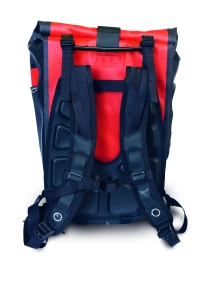 Weather resistance
Weather resistance
Crucial to consider—particularly if you’re carrying expensive electronics, such as a laptop—is whether the backpack will offer sufficient protection from the elements. Although most backpacks will offer some base level of resistance to light showers, especially if there’s an internal sleeve for your laptop, any all-weather commuter will be aware of just how insidious heavy rain can be, sneaking in through the zip and the seams of a poorly waterproofed backpack.
There are different approaches taken by companies to manage this. Some sell models with an incorporated rain cover, which can be unzipped from a hidden compartment, to slip over the entirety of the backpack. If you have an existing backpack, a further option may be to consider an aftermarket waterproof cover, with products such as the Hi-Viz Hump and similar models from BBB and Rapha worth a look.
There are a wide range of materials on the market designed to make a backpack as impermeable to water as reasonably possible. Some of these fabrics hark back to the past—military-grade tarpaulin and reclaimed tent canvas, for instance, on Chrome bags—whilst others make use of the very best in modern innovation, water-shedding nanotechnology and all.
If you’re riding in grim conditions, opt for a bag with sealed seams and a covered zipper, or a hanging liner that doesn’t have any seams on the outside, such as those featured to great effect in the Banjo Brothers range.
Note that external pockets are less likely to be adequately waterproofed, as they are separate from what is usually a lined or sealed main pocket. Make sure that you don’t accidentally destroy your mobile phone or other smaller items by overestimating the waterproofness of the outlying parts of the bag.
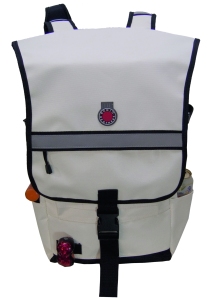 Visibilities
Visibilities
There are a couple of different factors to consider under this criteria: how well you can be seen by surrounding vehicles, and whether the backpack limits your ability to see your surroundings.
Consider what position your body is in when riding, and whether the backpack might compromise your peripheral vision. Many larger volume backpacks can sit up too high on the back, limiting your lines of sight when doing a head-check. This is an issue of particular importance when riding on a road bike, as you’re more stretched out and the likelihood of a backpack getting in the way is much greater.
As for whether you can be seen, consider that many backpacks are dark in colour and, owing to their position, quite likely to obscure any reflective detailing on your riding gear. Conscious of this, a growing number of backpack makers include reflective elements to help enhance the nocturnal visibility of their products. Some go even further by weaving reflective material into the fabric—the Rapha Backpack, for instance, is excellent for both side-on and front visibility, being constructed almost entirely out of luminous material.
Even distribution of weight across the back
I can’t help but feel we’ve collectively got a bit of a warped relationship with ergonomics, with generations of Australian school children having become accustomed to hanging their backpacks off one shoulder. Those straps around the waist and across the sternum are there for a reason, and on a bike, they’re of particular importance. First, they stop the bag moving around on your back, and second they spread the load more evenly across your upper body, letting the chest handle some of the burden.
Look for a backpack that will let you put the heaviest items closest to the base or back of the bag as possible, as there will be less momentum if the bag sways on your back. Most backpacks designed to carry a laptop will place it closest to the spine, which, as well as spreading the load more evenly, offers better protection in the case of impact or inclement conditions.
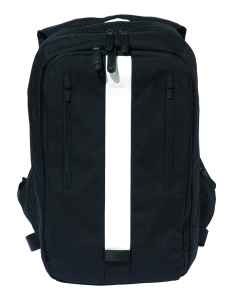 Breathability
Breathability
Wearing a bag during exertion is likely to result in a sweaty back, particularly in hot weather. Basic backpacks, which sit flush against the back, are not particularly good at avoiding this, but there are plenty of technologically advanced fixes for this problem.
The Deuter Airstripes system is one such smart solution, with two perforated strips of padding running lengthways down the back of the bag, creating a channel for air to flow and reducing sweat build up. The well-known hydration backpack brand, Camelbak, offers a variation, with their NV Back Panel featuring a number of independently mobile padded sections that form to the shape of your back but allow cooling breezes to play along the length of the back.
Although these fancy harnesses and webbing are great at managing the task of keeping your back relatively dry, as long as there’s some sort of padding that allows parts of the back to sit clear, you should have a little relief.
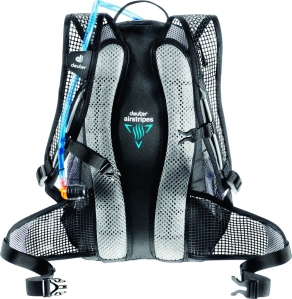 Carrying capacity
Carrying capacity
Depending on whether you’re carrying a paperback and a sandwich or a week’s worth of clothes, there are options available to suit you.
You want something that will snugly fit the maximum load you anticipate that you will carry. If you fall into the trap of getting a backpack too big for everyday use so you are prepared for any eventuality, functionality will be hampered by all that extra space flopping about on your back. If your backpack is for commuting, you’re likely to have a fairly consistent line-up of items that will make their way into your bag day-in, day-out. Most manufacturers will offer some sort of guide as to what you can expect to fit into the bag, which can help guide your decision. Brisbane Outdoor Gear, for instance, measure their bags in how many six-packs and bottles of Bundaberg Rum fit inside, which is certainly novel, and gives a relatable indication of what type of capacity you’re dealing with.
If your needs for space vary, don’t worry—there are products that let you expand the bag to accommodate more. The Mission Workshop Arkiv Field Pack is a modular set-up, with the option to attach up to eight extra weatherproof compartments onto the base backpack. If this is a little high-tech, a lot of the more ‘urban’ brands have webbing straps on the outside of the bag, which will let you fasten larger items to the bag’s exterior.
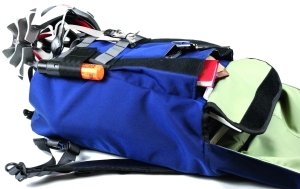 Ease of access
Ease of access
Do you need regular or easy access to any particular items in your bag, such as a lock or your keys? If so, look for a bag that has pockets that will allow you to quickly and easily get at your most vital belongings.
It’s also worth considering what sort of internal compartments you need in your backpack—too many and you’ll find yourself rummaging around in endless pockets trying to remember where you stashed something, too few and you’ll have a confusing jumble at the bottom of the bag. It’s worth looking for a backpack with at the very least a couple of pockets positioned on the outside of the bag, so your keys don’t disappear. There are also brands offering external D-lock holsters which are great at keeping these bulky items from bashing into the contents of your bag in motion, and leaving them easily accessible for a quick dash into the shops.
Ride On content is editorially independent, but is supported financially by members of Bicycle Network. If you enjoy our articles and want to support the future publication of high-quality content, please consider helping out by becoming a member.

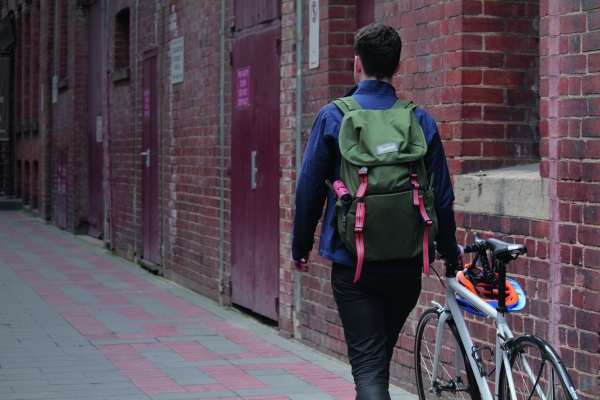
Having ridden a bike in all weathers both here and in europe during the last 65 years and still use my bike as my primary transport (I don’t own a car) I have one recommendation on wearing Back Packs. Don’t. Get small rack and a top box and save your back.
+1
backpacks make for an uncomfortable ride
you don’t even notice if you have a load on a rack
panniers are great for more stuff
ortleib make excellent panniers and tubus excellent racks
I commute about 73km return and I find a light backpack (Dueter Race Air Exp) much better than panniers. I’m a big guy though, which might make a difference, and i’m only carrying small items and a raincoat, my work clothes stay at work.
I can also highly recommend fibre flares for dark commuting, a great way to be seen.. I’ve got 4 attached around me and the bike.
My Brisbane Outdoor (BoGear) backpack is great. Cops all the abuse, easy to see inside with light coloured lining, dedicated D-lock strap, back plastic layer stops items stabbing me in the back and easy flap opening. Lifetime warranty and its Australian!
This is a topic that’s near to my heart… Cheers!
Where are your contact detail though?